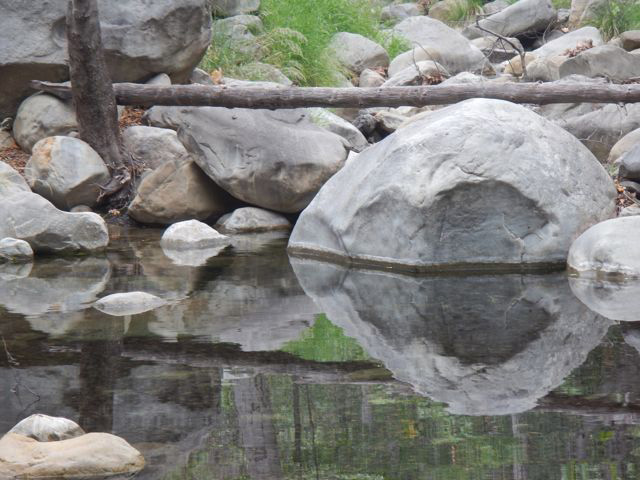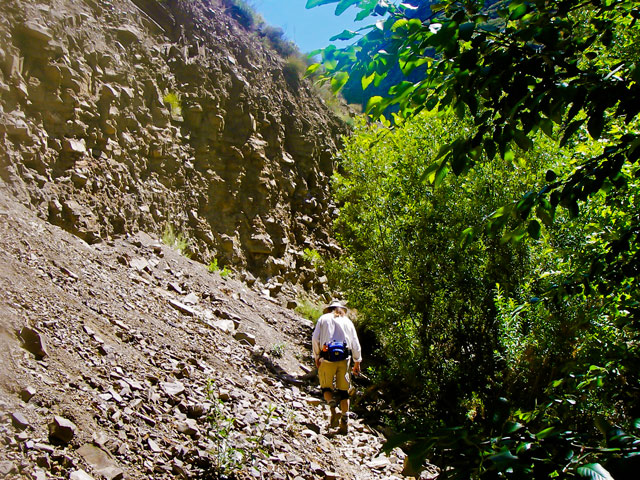Wilderness: The Cure for What Ails Us
Federally Protected Lands Yield Reflection and Solitude

As a postmodern, middle-class American citizen dwelling in Santa Barbara — the symbolic core of the American Empire — I witness our era’s warp-speed pace from a small Westside bungalow near Harding School. It’s a clichéd observation that the early 21st century’s frantic and increasing “velocity” really does push many of us right to the edge, but it’s valid nonetheless. Most Americans work hard and are highly productive, yet this hectic race sends a few right over the edge into violence or madness, or both. In a long New York Times opinion piece (Why You Hate Work), Tony Schwartz and Christine Porath demonstrate that for American white-collar workers, “excessive demands are leading to burnout everywhere.”
September 2014 marks the 50th anniversary of President Johnson’s landmark Wilderness Act, which led to all previous “primitive areas” and “wilderness” areas being designated as congressionally mandated wilderness zones, with strict protections. In 1968, our own 197,000-acre San Rafael Wilderness was the very first primitive area to formally gain the new “federal wilderness” status, thus banning all motorized vehicles, bikes, chainsaws, and permanent improvements but supporting hiking, backpacking, and equine visitors. Part of the congressional definition calls wilderness “an area where the earth and its community of life are untrammeled by man, where man himself is a visitor who does not remain.” Today’s National Wilderness Preservation System (NWPS) protects about 110 million acres of land spanning 44 states.
We should celebrate the 50th anniversary of the NWPS system because without these dazzling realms of extravagant beauty to serve as relaxing refuge for overburdened workers pounded by the posthuman work pace, we would see even more burnout among working Americans. We can gather inspiration from U.S. Representative Lois Capps’s proposed new wilderness expansion legislation, called the Central Coast Heritage Protection Act , which aims to protect another 240,000 acres near Santa Barbara. Fragile areas on the Carrizo Plain would get more protection via three newly designated wilderness zones, and 160 miles of “wild and scenic” river status is planned for the Manzana, Indian, Mono, Sespe and Matilija. Several past Hiking the Santa Barbara Backcountry columns involve treks up these small rivers.
Schwartz and Porath correctly diagnose the cause for this typical worker fatigue and burnout — “the relentless stress of increased demand, caused in large part by digital technology” — but they omit the healing powers of nearby nature and our nearby wilderness areas. There are over 55 federal wilderness areas in California alone, and five are less than a two-hour drive from Santa Barbara: They are available to all of us, and you don’t need an Adventure Pass!

Some posthuman Americans periodically flee north and east into the isolated riparian corridors of the San Rafael or Chumash wildernesses where white noise abates, one can “hear” one’s mind ticking, and oak, sycamore, and conifers encircle. Away from the iClutter and S.B.’s blaring 101 freeway, there’s no haggling over Measure M, wondering about serial murderers, or stressing out at work.
The Internet world with constant communiqués from every port breeds the wearying strain of constant partial attention. At the workplace it’s called multitasking, but in the rest of one’s day it’s just hell. Some of us bear bigger burdens from participation in America’s constant wars (PTSD and more), were failed by the public schools system, or have suffered other forms of abuse or neglect. The savage celerity at many workplaces heightens the cosmic stress, since the digital device array means the worker can get even more done in the eight-hour day.
The best antidote for American anxieties of medium or minor intensity is finding access to nature belts and zones, including local parks and green areas. An additional physical “port” to another land of relaxation and consistent total attention is where the road ends at one of the five local federal wilderness areas (see Hiking the Backcountry columns for directions).
How can we celebrate? How can we consecrate these fantastical tracts of landscapes bedecked with their pristine creeks? Go purchase a Bryan Conant trail map, load supplies up into your vehicle, and drive 90 minutes some weekend to … say … Nira Camp ). Day hike or backpack into the federal wilderness there, and unwind … mind control and relaxation are easier while immersed in this overwhelming and arid landscape. Begin by strolling beneath the sycamores and gray pine, looking for mountain king snakes and horned toads … and only later do you realize that some of the debilitating stress has dissipated.
Schwartz and Porath mention that a humane company has to improve four specific core needs of its workers: physical, emotional, mental, and spiritual. Every one of these core human values ratchets up in our remote wilderness worlds and feels invigorating and restorative. You walk amid raging beauty, experiencing natural grandeur and grace, and the mental apparatus slumbers while the pulsating life all around the hiker affords intense bouts of spiritual uplift. If you travel north and east to these wilderness oases, with new ones arising in Rep. Capps’s legislation, the mental relaxation will come.
B. Conant’s San Rafael Wilderness Trail Map, 2009 edition, is obtainable for $8.95 at bryanconant.com. On “posthuman,” see N. Katherine Hayles’s How We Became Posthuman: Virtual Bodies in Cybernetics, Literature, and Informatics, University of Chicago Press (1999), and Peter Sloterdijk’s books on the topic.



